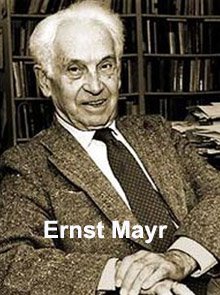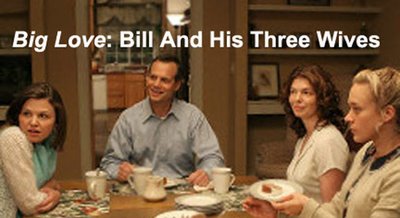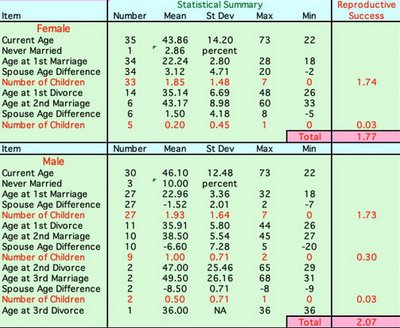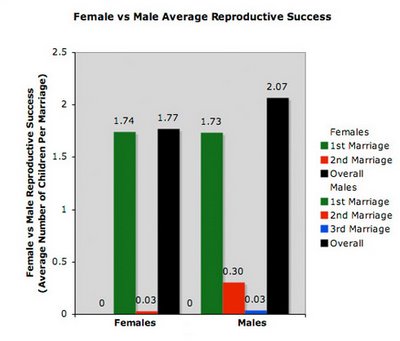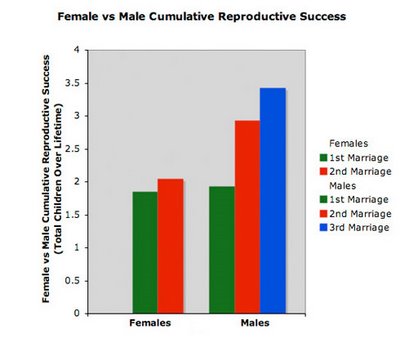
AUTHOR:
Allen MacNeillSOURCE: Original essay
COMMENTARY: That's up to you...
Given the sudden increase in readership of this list, I'm going to take the shamelessly opportunistic route and post a summary of my most recent publication: "The capacity for religious experience is an evolutionary adaptation to warfare", in Fitzduff, M. & Stout, C. (eds) (2005)
The Psychology of Resolving Global Conflicts: From War to Peace, vol. 1, ch. 10, pp. 257-284. This, like the recent upsurge in interest in polygamy, is a very hot topic. Terrorism is very much in the news, and since a lot of it seems to be at least peripherally associated with extreme religious views, the idea that these can be part of an evolutionary "arms race" seems very timely.
I first gave a version of this paper at the 2004 annual conference of the New England Institute in Portland, Maine. It has since been published among the proceedings of that conference (the citation is: MacNeill, A. (2004) "The capacity for religious experience is an evolutionary adaptation to warfare"
Evolution & Cognition, vol. 10, no. 1, pp. 43-60). I was later contacted by Mari Fitzduff and Chris Stout for inclusion in their anthology on peace and war, which was published last December. The latter is a terrific collection, but a little pricey (I'm glad I got a free copy out of the deal). If readers are interested, I can email a pdf of the entire paper. It's pretty good, if I do say so myself.
But why should you take just my word for it? Here's the abstract and the "core of the argument":
ABSTRACT
The criteria for deciding whether a characteristic qualifies as an evolutionary adaptation are discussed: differential survival and reproduction are considered the most appropriate criteria. The pan-specific qualities of both religious experience and warfare indicate that they are both evolutionary adaptations. There is considerable variation between individuals with respect to their capacity for religious experience and motivation to participate in warfare. Selective advantages for participation in warfare accrue to both winners and losers as long as the benefits of participation exceed the average costs. These selective advantages, primarily in the form of differential reproductive success, accrue to males when they are on the winning side in a war, and often to females no matter which side they are on.
Recent work on the evolutionary dynamics of religion have converged on a "standard model" in which religions and the supernatural entities which populate them are treated as epiphenomena of human cognitive processes dealing with the detection of and reaction to agents under conditions of stress, anxiety, and perceived threat. Religious experience at the individual level is characterized by depersonalization, coupled with submission to a super-individual force; the same is essentially the case for participation in warfare. The capacities for both religious experience and participation in warfare are adaptations insofar as they evolve by means of natural selection operating primarily at the level of individuals who are members of groups in which both kin selection and reciprocal altruism are also operative. It is likely that the overall patterns of supernatural organization exist as the result of coevolution between the memetic content of religious beliefs and the underlying neurological matrix within which such beliefs are maintained and transmitted in the context of specific ecological subsistence patterns.
THE CORE OF THE ARGUMENT
War involves violent force, up to and including killing people. To participate in a war means to participate in an activity in which there is a significant probability that one will either kill other people, or will be killed by them.
This means that any participant in warfare is faced with the possibility of painful and violent death as the result of such participation. Given this probability, if natural selection acts at the level of individuals, how can natural selection result in a propensity to participate in warfare? Clearly, either the probability that one will be killed must be perceived as low or the potential payoff from such participation must be perceived as high. If natural selection is to operate at the level of individuals, these two circumstances should ideally be obtained simultaneously,
Here is where the capacity for religious experience is crucial. By making possible the belief that a supernatural entity knows the outcome of all actions and can influence such outcomes, that one's "self" (i.e., "soul") is not tied to one's physical body, and that if one is killed in battle, one's essential self (i.e., soul) will go to a better "place" (e.g., heaven, valhalla, etc.) the capacity for religious experience can tip the balance toward participation in warfare. By doing so, the capacity for religious belief not only makes it possible for individuals to do what they might not otherwise be motivated to do, it also tends to tip the balance toward victory on the part of the religiously devout participant. This is because success in battle, and success in war, hinges on commitment: the more committed a military force is in battle, the more likely it is to win, all other things being equal. When two groups of approximately equal strength meet in battle, it is the group in which the individuals are more committed to victory (and less inhibited by the fear of injury or death) that is more likely to prevail. To give just one example, the battle cry and motto of the clan Neil has always been "
Buaidh na bas!" - "Victory or death!"
Religions tell people what they most want to hear: that those agents and processes that they most fear have no ultimate power over them or pose no threat to themselves or the people they care about. In particular, by providing an intensely memorable, emotionally satisfying, and tension-releasing solution to the problem of mortality, religions make it possible for warriors to master their anxieties and do battle without emotional inhibitions. This makes them much more effective warriors, especially in the hand-to-hand combat that humans have fought throughout nearly all of our evolutionary history.
Consider the characteristics that are most often cited as central to religious experience. Newberg and d'Aquili (2001) have presented an integrated model of the neurobiological underpinnings of religious experience. They have pointed out that central to most religious experience is a sensation of awe, combined with "…mildly pleasant sensations to feelings of ecstasy." (Newberg and d'Aquili, 2001, p. 89) They have shown that such sensations can be induced by rhythmic chanting and body movements, combined with loud music and colorful visual displays, all of which produce a condition of sensory overload. This process then induces a neurological condition characterized by a sense of depersonalization and ecstatic union with one's surroundings.
This is precisely what happens as the result of military drill and training. It is no accident that humans preparing for war use exactly the same kinds of sensory stimuli described by Newberg and d'Aquili. They have tied such displays to religious activities, and shown the deep similarities between religious rituals and secular ones: "…patriotic rituals… emphasize the "sacredness" of a nation, or a cause, or even a flag…turn[ing] a meaningful idea into a visceral experience." (Newberg and d'Aquili, p. 90) The two types of activities - religious rituals and patriotic rituals - use the same underlying neurological pathways and chemistry.
Religious experience is often equated with a state of mystical union with the supernatural. But what exactly does this mean, and in the context of this presentation, is there a connection between mystical experience and warfare? The answer is almost certainly yes. That combatants have had experiences that would be classified as mystical before, during, and after battle is a simple historical fact. The Scottish flag is based on just such an experience: the white crossed diagonal bars against a field of azure of the St. Andrew's cross is said to have appeared to King Hungus and his warriors during a battle against in the Saxons. Legend says this so encouraged the Scots and frightened their adversaries that a victory was won.
A common thread in all mystical experiences is a loss of the sense of self and a union with something larger than oneself. (Newberg and d'Aquili, p. 101) Additionally, there is often a sense of submission to a higher power, in which one's personal desires and fears are subordinated to the purposes of that higher power. If that higher power were identified with the leaders of a military hierarchy, it is easy to see how such experiences could be used to increase one's loyalty and submission to that hierarchy.
Wilson (2002) has proposed that the capacity for religion has evolved among humans as the result of selection at the level of groups, rather than individuals. Specifically, he argues that benefits that accrue to groups as the result of individual sacrifices can result in increased group fitness, and this can explain what is otherwise difficult to explain: religiously motivated behaviors (such as celibacy and self-sacrifice) that apparently lower individual fitness as they benefit the group.
At first glance, Wilson's argument seems compelling. Consider the most horrific manifestation of religious warfare: the suicide bomber. A person who blows him or herself up in order to kill his or her opponents has lowered his or her individual fitness. Doesn't this mean that such behavior must be explainable only at the level of group selection? Not at all: the solution to this conundrum is implicit in the basic principles of population genetics. Recall that one of Darwin's requirements for evolution by natural selection was the existence of variation between the individuals in a population. (Darwin, 1859, pp. 7 - 59) Variation within populations is a universal characteristic of life, an inevitable outcome of the imperfect mechanism of genetic replication. Therefore, it follows that if the capacity for religious experience is an evolutionary adaptation, then there will be variation between individuals in the degree to which they express such a capacity.
Furthermore, it is not necessarily true that when an individual sacrifices his or her life in the context of a struggle, the underlying genotype that induced that sacrifice will be eliminated by that act. Hamilton's principle of kin selection (Hamilton, 1964) has already been mentioned as one mechanism, acting at the level of individuals (or, more precisely, at the level of genotypes), by which individual self-sacrifice can result in the increase in frequency of the genotype that facilitated such sacrifice. Trivers (1971) has proposed a mechanism by which apparently altruistic acts on the part of genetically unrelated individuals may evolve by means of reciprocal altruism.
Given these two mechanisms, all that is necessary for the capacity for religious behavior, including extreme forms of self-sacrifice, to evolve is that as the result of such behaviors, the tendency (and ability) to perform them would be propagated throughout a population. The removal of some individuals as the result of suicide would merely lower the frequency of such tendencies and abilities in the population, not eliminate them altogether. If by making the ultimate sacrifice, an individual who shares his or her genotype with those who benefit by that sacrifice will, at the level of his or her genes, become more common over time. (Wilson, 1975, p. 4)
Let us now consider the flip side of war: the benefits that accrue to the winners of warlike conflicts. Given the mechanisms of kin selection, one can see how warfare and the religious beliefs that facilitate it might evolve among the closely related kin groups that constitute the raiding parties characteristic of hunting/gathering and pastoral peoples. It is also possible to construct an explanation for militia warfare and professional warfare on the basis of a blend of kin selection and reciprocal altruism. However, a closer examination of the spoils of war make such explanations relatively unnecessary.
Betzig (1986) performed a cross-cultural analysis of the correlation between despotism and reproductive success in 186 different cultures. Her conclusion was that "…[n]ot only are men regularly able to win conflicts of interest more polygynous, but the degree of their polygyny is predictable from the degree of bias with which the conflicts are resolved. Despotism, defined as an exercised right to murder arbitrarily and with impunity, virtually invariably coincides with the greatest degree of polygyny, and presumably, with a correspondingly high degree of differential reproduction." (Betzig, 1986, p. 88) In other words, males who most successfully use violence and murder as a means of influencing the actions of others have historically had the most offspring. In the context of warfare, this means that the winners of a battle, or even more so, of a war will pass on to their offspring whatever traits facilitated their victory, including the capacity to believe in a supernatural force that guides their destiny and protects them in battle. The effects of such capacities are not trivial; as Betzig points out, the differences between the reproductive success of the winners of violent conflicts and the losers is measured in orders of magnitude. As noted earlier, wars are bottlenecks through which only a relative few may pass, but which reward those who do with immensely increased reproductive success.
Putting all of this together, it appears likely that the capacity for religious experience and the capacity for warfare have constituted a coevolutionary spiral that has intensified with the transitions from a hunting/gathering existence through subsistence agriculture to the evolution of the modern nation-state. As pointed out earlier, there is a correlation between the type of intergroup violence and the ecological context within which that violence occurs. Generally speaking, raiding/rustling is correlated with hunting/gathering and pastoralism, militia warfare with village agriculture, and professional warfare with urban society and the nation-state. There is a corresponding progression in the basic form of religious experience and practice: animism is most common among hunter-gatherers, while polytheism is more common among agriculturalists, and monotheism is most common in societies organized as nation-states. This is not to say there are no exceptions to this correlation. However, the fact that such a correlation can even be made points to the underlying ecological dynamics driving the evolution of subsistence patterns, patterns of warfare, and types of religious experience.
REFERENCES CITED
Betzig, L. (1986).
Despotism and differential reproduction: A darwinian view of history. New York: Aldine.
Darwin, C. R. (1859).
On the origin of species by means of natural selection, or the preservation of favoured races in the struggle for life. London: Murray.
Hamilton, W. D. (1964). The genetical theory of social behavior.
Journal of theoretical biology, 12(1), 1-52.
Newberg, A. B. and d'Aquili, E. G. (2001).
Why god won't go away: Brain science and the biology of belief. New York: Ballantine.
Trivers, R. L. (1971). The evolution of reciprocal altruism.
Quarterly review of biology, 46(4), 35-57.
Wilson, D. S. (2002).
Darwin's cathedral: evolution, religion, and the nature of society. Chicago: University of Chicago Press.
Wilson, E. O. (1975).
Sociobiology: The new synthesis. Cambridge, MA: Belknap.
--
Allen





